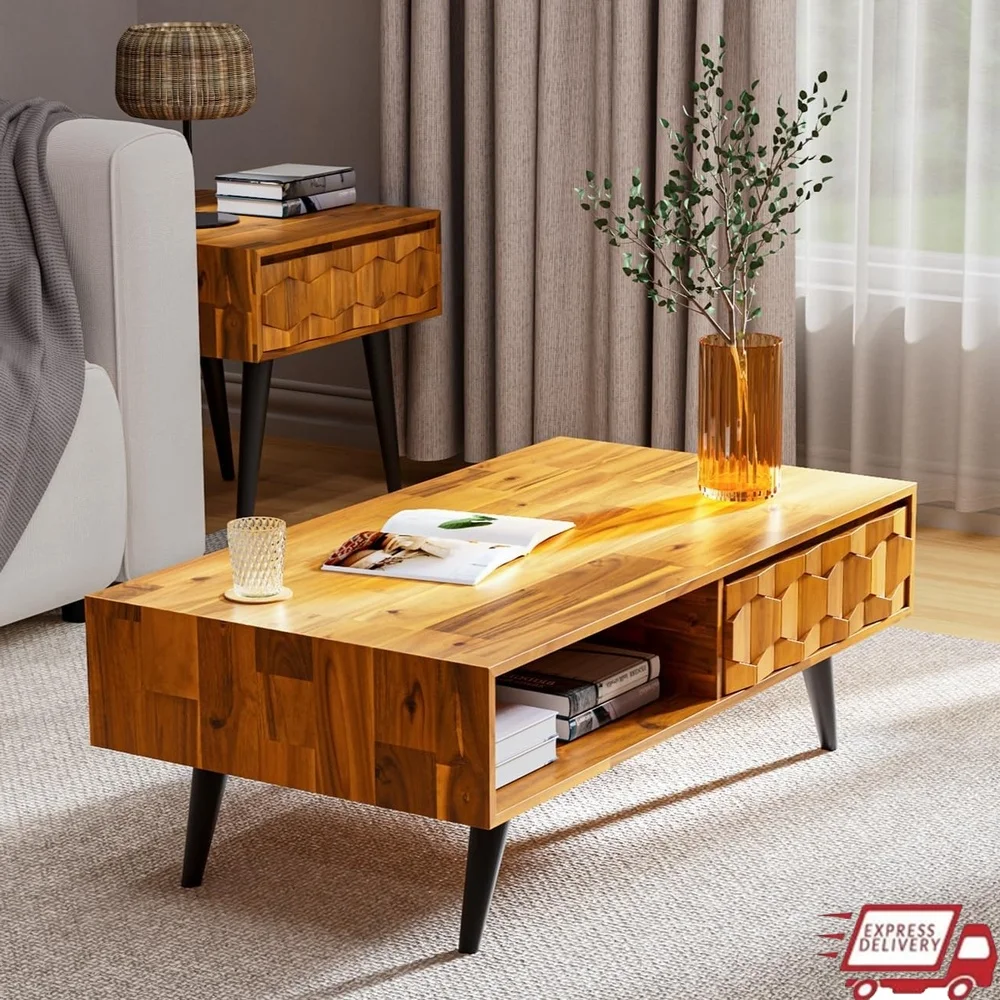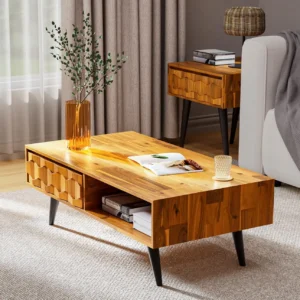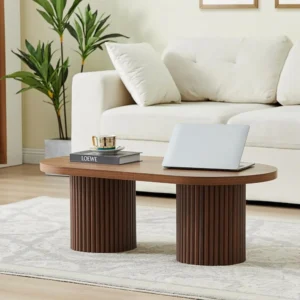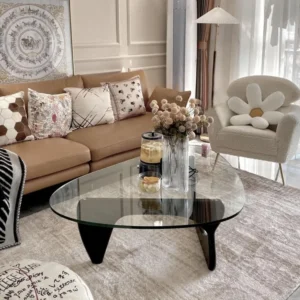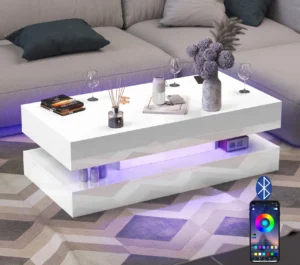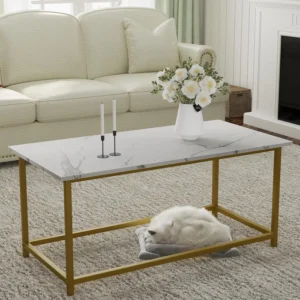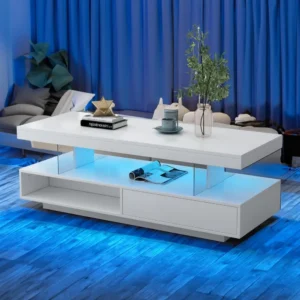Understanding the Iconic Nature of Teak Tables
When we talk about “iconic” furniture, we’re referring to pieces that stand the test of time—designs that remain relevant and desirable regardless of passing trends. Iconic furniture possesses a certain quality that makes it instantly recognizable, continuously influential, and perpetually appealing. Teak tables perfectly embody this iconic status in the world of furniture design.
Teak tables have maintained their popularity and prestige across different design eras, from their prominence in mid-century modern homes to their continued relevance in contemporary spaces. What elevates these tables beyond ordinary furniture is a harmonious combination of exceptional material qualities, thoughtful design principles, superior craftsmanship, and practical durability.
The story of iconic teak tables isn’t just about aesthetics—it’s about how natural material beauty meets human ingenuity to create pieces that serve both functional and artistic purposes. Whether displayed in museums or central to family gatherings, these tables carry a significance that intelligent black mid-century coffee tables share in their approach to thoughtful design.
In modern homes, mid-century modern teak coffee tables continue to be coveted centerpieces, demonstrating how certain designs transcend fleeting fashions to become true classics. Their enduring appeal stems from fundamental elements we’ll explore—qualities that separate merely good furniture from truly iconic pieces.
The Exceptional Properties of Teak Wood
Teak (Tectona grandis) stands among the world’s most prized hardwoods, with a reputation built over centuries of use in demanding applications from shipbuilding to fine furniture. This remarkable material forms the foundation of what makes teak tables so special and enduring.
What truly sets teak apart is its extraordinary natural composition. The wood contains high levels of natural oils and silica, creating built-in protection that few other woods can match. These oils serve multiple purposes:
- They provide exceptional resistance to moisture, preventing warping and cracking
- They naturally repel insects and resist fungal decay
- They contribute to teak’s legendary longevity in both indoor and outdoor environments
The density of teak—approximately 40-45 pounds per cubic foot—surpasses many other hardwoods, giving teak furniture remarkable stability and heft. This density translates to furniture that feels substantial and remains dimensionally stable despite humidity changes or environmental shifts.
Visually, teak presents a straight grain pattern with a golden-honey color that naturally darkens to a rich amber tone over time. This distinctive appearance makes it immediately recognizable to furniture enthusiasts. The wood’s tight, even grain not only creates visual beauty but also contributes to its strength and workability.
Understanding how to identify authentic teak grain helps appreciate why this material forms the foundation of iconic furniture. The natural characteristics of teak allow designers and craftspeople to create pieces with thinner, more elegant profiles while maintaining structural integrity—something not possible with less robust materials.
For those considering investment pieces, solid wood coffee tables made from genuine teak offer a combination of beauty and performance that synthetic materials simply cannot replicate. These inherent properties set the stage for designers to express their vision while ensuring the resulting furniture stands the test of time.
Design Principles That Define Iconic Teak Tables
The most celebrated teak tables achieve their iconic status through thoughtful design principles that perfectly complement the material’s inherent qualities. These design approaches transform raw teak into furniture that speaks a visual language of balance, harmony, and purpose.
Clean lines define most iconic teak tables, with an emphasis on visual lightness despite the wood’s substantial weight. This approach creates a compelling visual tension—furniture that appears almost floating while providing rock-solid stability. Designers achieve this effect through careful attention to proportion, particularly in how table surfaces relate to supporting structures.
Simplicity reigns in iconic teak design, yet this simplicity is deceptively complex. Every curve, taper, and transition is meticulously calculated to create visual flow. Nothing feels arbitrary—each element serves both aesthetic and functional purposes. This deliberate restraint allows the natural beauty of teak to take center stage while creating forms that complement, rather than compete with, surrounding spaces.
The balance between form and function reaches perfect harmony in iconic teak tables. Functional considerations like ergonomics, stability, and usability drive design decisions while still creating visually striking silhouettes. This dedication to both beauty and utility explains why these tables remain relevant across decades—they continue to serve real needs while providing enduring aesthetic pleasure.
Many iconic teak designs embrace organic influences, with subtle curves that echo natural forms. These organic elements soften what might otherwise be severe geometric shapes, creating pieces that feel inviting rather than austere. The approach to mid-century modern table design exemplifies this balance between geometric precision and natural warmth.
The versatility of iconic teak designs allows them to complement various interior styles—from minimalist to eclectic—without feeling out of place. This adaptability stems from their focus on essential forms rather than decorative trends, creating furniture that transcends specific style categories to become truly timeless.
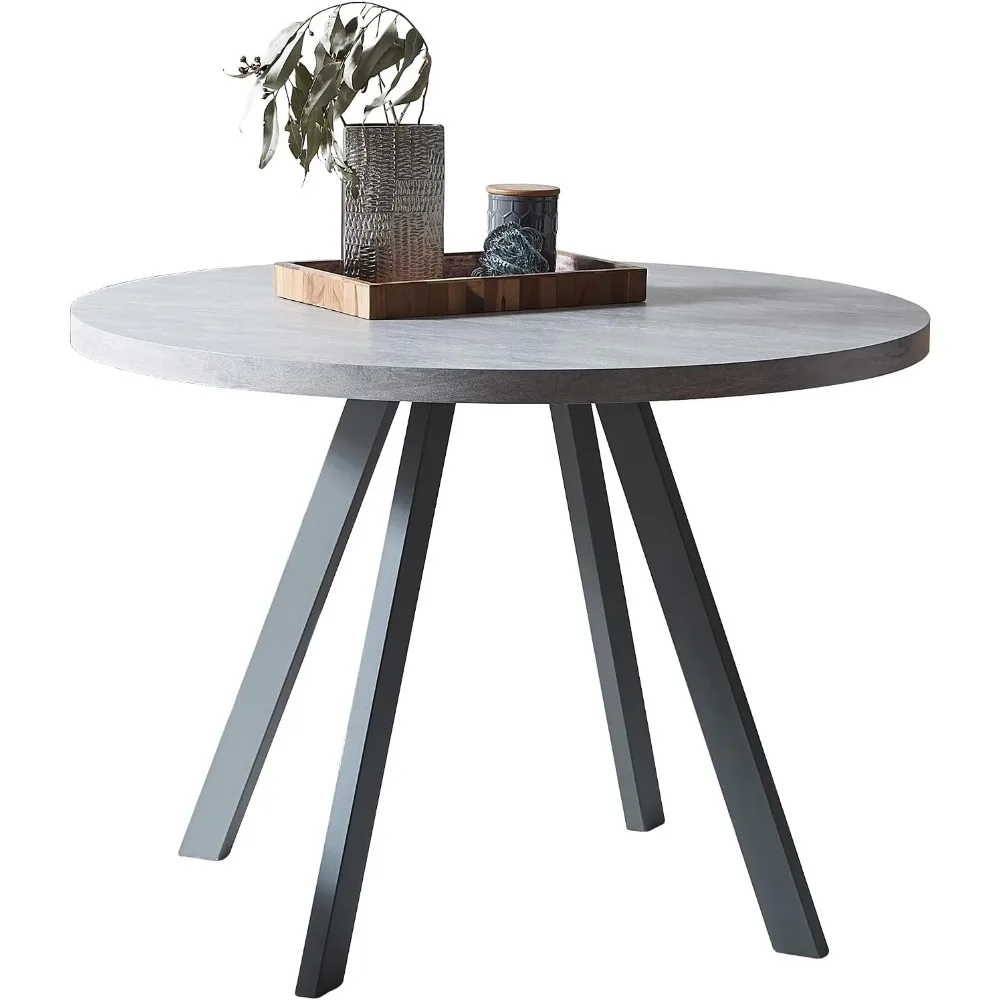
The Mid-Century Modern Movement: Teak’s Golden Era
The mid-century modern period from roughly the 1940s through the 1960s represents teak’s defining moment in furniture design. During this era, teak became synonymous with forward-thinking, sophisticated furniture that perfectly captured the optimistic, democratic spirit of the time.
Teak’s warm tones and natural beauty made it the ideal material for mid-century designers who sought to create furniture that balanced innovation with accessibility. The clean, unadorned aesthetic of the era allowed teak’s inherent qualities to shine. Designers embraced organic modernism—furniture with flowing, natural forms executed with modern manufacturing techniques—with teak as their medium of choice.
Characteristic elements of mid-century teak tables include:
- Tapered legs that create visual lightness
- Floating tops that appear to hover above their bases
- Subtle edge profiles that soften geometric forms
- Thoughtful proportions that consider human scale
- Minimal ornamentation that focuses attention on material and form
These tables embodied the era’s design philosophy: furniture should be beautiful, functional, well-crafted, and accessible to everyday homes. The influence of Scandinavian design principles, with their emphasis on craftsmanship and material honesty, further elevated teak tables during this period.
Today, these design elements continue to influence contemporary furniture designers. The principles established during teak’s golden era remain relevant because they connect with fundamental human preferences for proportion, comfort, and visual harmony. Understanding styles that go well with mid-century modern helps appreciate how these pieces integrate into today’s interiors.
The enduring allure of iconic teak tables demonstrates how certain design principles transcend time. For those seeking authentic pieces from this influential period, Danish coffee tables represent some of the most refined expressions of mid-century teak craftsmanship.
Masterful Craftsmanship: The Art of Joinery
The difference between ordinary teak furniture and truly iconic pieces often comes down to the quality of craftsmanship, particularly in joinery—the methods used to connect different parts of the table. Superior joinery not only ensures structural integrity but also creates visual harmony and demonstrates the maker’s respect for the material.
Traditional joinery techniques perfected over generations remain the gold standard in iconic teak tables:
- Mortise and tenon joints create incredibly strong connections where legs meet aprons
- Dovetail joints allow for wood movement while maintaining structural integrity in drawers
- Finger joints distribute stress across multiple connection points
- Spline joints reinforce mitered corners with hidden strength
These techniques avoid the need for visible hardware, creating clean, uninterrupted surfaces that showcase the teak’s natural beauty. Master craftspeople understand how to work with teak’s density and grain direction to create joints that strengthen over time rather than weaken.
The hallmark of exceptional teak joinery is precision—gaps measured in fractions of millimeters rather than visible spaces. This precision requires both machine accuracy and hand-finishing, combining modern efficiency with traditional attention to detail. In examining Danish coffee table construction craft, you’ll find this balance of techniques has been perfected over decades.
Beyond structural concerns, masterful joinery contributes to a table’s visual rhythm and proportions. The thoughtful placement of joints creates subtle visual interest without overwhelming the design. Similarly, understanding design considerations for black mid-century coffee tables reveals how joinery influences overall aesthetic impact.
In truly iconic teak tables, construction methods aren’t merely functional—they’re an integral part of the design language. This integration of structure and aesthetics represents the highest expression of furniture craftsmanship, elevating functional objects to the realm of art.
The Patina of Time: How Teak Ages Beautifully
One of teak’s most distinctive qualities—and a significant contributor to its iconic status—is how it ages. Unlike many materials that deteriorate with time, teak undergoes a transformation that often enhances its beauty and character, developing what connoisseurs call “patina.”
When left untreated outdoors, teak naturally weathers to a silvery-gray color. This transformation occurs as ultraviolet light breaks down surface oils and the wood responds to environmental exposure. Rather than representing decay, this silvery patina provides a protective layer that continues to shield the wood beneath. Many designers and owners specifically choose teak for this graceful aging process, which gives outdoor furniture a sophisticated, established presence.
Indoor teak follows a different aging trajectory, developing a rich amber tone that deepens over decades. This warming effect occurs as the wood’s natural oils oxidize, creating a honey-gold color that grows more pronounced with age. Quality teak develops this patina evenly, without the blotchiness or darkening that affects less stable woods.
Perhaps most remarkably, teak’s aging process doesn’t compromise its structural integrity. While the appearance evolves, the strength and stability remain—allowing iconic pieces to be passed down through generations. This combination of visual evolution and structural permanence creates furniture that tells a story while continuing to serve its purpose.
The natural aging of teak represents a fascinating contrast to trends in different walnut table finishes, where the appearance is often manipulated through stains and treatments rather than allowed to develop naturally. For those appreciating the character that comes with time, vintage coffee tables offer examples of teak’s beautiful maturation process.
Living with Teak: Practical Benefits of Iconic Designs
Beyond aesthetic considerations, iconic teak tables earn their status through everyday practicality—qualities that make them not just beautiful objects but functional tools for daily living. These practical benefits explain why many teak tables remain in active use decades after their creation.
Teak’s exceptional durability translates to furniture that withstands the rigors of daily life. The tables resist:
- Water rings and liquid spills (the natural oils repel moisture)
- Scratches and dents (due to the wood’s density)
- Staining (the tight grain prevents deep penetration of spills)
- Warping and cracking (thanks to dimensional stability)
This resilience means owners can actually use their tables without excessive worry—placing hot dishes, working on projects, or gathering family without treating the furniture as precious or fragile.
The minimal maintenance requirements of teak further enhance its appeal for everyday living. Unlike many fine woods that demand careful conditioning and protection, teak requires little intervention to maintain its integrity. Simple cleaning with mild soap and water removes most soiling, while occasional light sanding can refresh surfaces if desired.
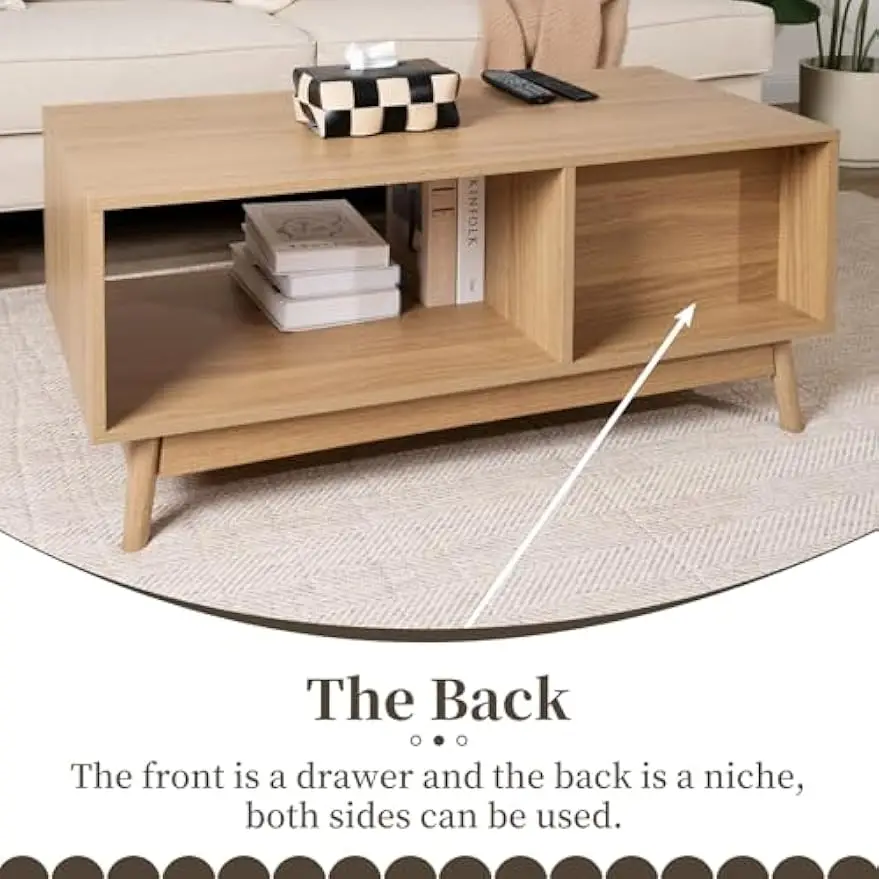
Iconic teak designs often incorporate thoughtful functional elements that enhance livability—storage drawers that operate smoothly even after decades, proportions that accommodate modern living patterns, and surfaces designed for multiple uses. These practical considerations demonstrate how features of black mid-century coffee tables contribute to their enduring popularity.
The combination of durability and minimal maintenance creates furniture that serves its owners rather than demanding their service—a principle that defines truly iconic design.
Investment Value: Why Iconic Teak Tables Appreciate Over Time
Unlike most furniture purchases that depreciate immediately, iconic teak tables often represent genuine financial investments that maintain or increase their value over time. This economic dimension further distinguishes truly iconic pieces from ordinary furniture.
Several factors contribute to teak furniture’s investment potential:
- Diminishing supply of old-growth teak makes vintage pieces increasingly rare
- Superior construction ensures long-term usability
- Timeless design remains desirable regardless of fashion cycles
- Growing appreciation for mid-century aesthetics drives collector interest
- Patina development enhances rather than diminishes value
Quality teak tables from recognized designers or workshops can appreciate significantly, sometimes selling for many times their original purchase price at auction or through specialized dealers. Even pieces without famous designer attribution but exhibiting exceptional craftsmanship often gain value as they age.
Beyond potential financial appreciation, teak tables offer outstanding value through longevity. When considering cost-per-use over decades of service, even initially expensive teak pieces often represent better value than less expensive furniture requiring frequent replacement.
For those interested in furniture as investment, rectangular coffee tables in teak represent classic forms likely to maintain their appeal and functionality across generations. Their enduring relevance in home interiors ensures continued demand even as other furniture styles fall from favor.
Mid-Century Modern Solid Wood Coffee Tables, Mid-Century Modern Teak Coffee Tables
$879.95 Select options This product has multiple variants. The options may be chosen on the product pageMid-Century Modern Danish Coffee Tables, Mid-Century Modern Oval Coffee Tables, Mid-Century Modern Solid Wood Coffee Tables
$390.05 Select options This product has multiple variants. The options may be chosen on the product pageMid-Century Modern Glass Top Coffee Tables, Mid-Century Modern Vintage Coffee Tables, Mid-Century Modern Vintage Side & End Tables
$725.36 Select options This product has multiple variants. The options may be chosen on the product pageMid-Century Modern Large Coffee Tables, Mid-Century Modern Rectangular Coffee Tables
$603.26 Select options This product has multiple variants. The options may be chosen on the product pageMid-Century Modern Marble Top Coffee Tables, Mid-Century Modern Rectangular Coffee Tables, Mid-Century Modern White Coffee Tables
Price range: $163.28 through $189.22 Select options This product has multiple variants. The options may be chosen on the product pageMid-Century Modern Rectangular Coffee Tables, Mid-Century Modern White Coffee Tables
$605.68 Select options This product has multiple variants. The options may be chosen on the product page
This investment perspective adds another dimension to understanding what makes teak tables iconic—they represent not just aesthetic and functional achievement, but also enduring value in a world of disposable goods.
Sustainability Considerations: The Future of Iconic Teak
The iconic status of teak furniture faces important challenges and opportunities regarding sustainability. As environmental awareness grows, the future of teak as a premium furniture material depends on responsible practices that preserve both forests and craftsmanship traditions.
Historic teak harvesting practices have raised legitimate environmental concerns, with old-growth forests in Southeast Asia facing significant pressure. However, the furniture industry has responded with more sustainable approaches that may ensure teak’s continued iconic status:
- Forest Stewardship Council (FSC) certification provides assurance of responsible harvesting
- Plantation-grown teak, while different in character from old-growth wood, offers a renewable alternative
- Reclaimed teak salvaged from old buildings and boats gives new life to existing materials
- Small-scale, selective harvesting supports local economies while minimizing environmental impact
Reclaimed teak deserves special attention in discussions of iconic furniture. These materials often possess unique character—weathered patinas, interesting grain variations, and historical significance—that newly harvested wood cannot match. Many contemporary designers create distinctive pieces using reclaimed teak, establishing new icons while honoring environmental values.
The growing emphasis on furniture longevity also supports sustainability. Well-designed, well-constructed teak tables that remain in use for decades represent a fundamentally sustainable approach to consumption, regardless of material source. This perspective aligns perfectly with the values that have always defined iconic teak furniture—quality, durability, and timeless design.
As homeowners seek to create environmentally conscious living spaces, understanding how black coffee tables complement mid-century interiors helps make thoughtful choices that balance aesthetic desires with sustainability concerns.
How to Identify Quality in a Teak Table
Recognizing the elements that contribute to a teak table’s iconic status requires attention to specific indicators of quality. Whether examining vintage pieces or contemporary designs, these guidelines help distinguish exceptional tables from ordinary furniture:
Material Quality:
– Genuine teak feels dense and heavy compared to similar-sized tables in other woods
– Natural variations in grain should appear throughout, without perfectly uniform patterns
– Fresh cuts reveal golden-honey color that darkens slightly when exposed to air
– Surfaces feel smooth but not overly processed, with natural oils providing subtle sheen
Construction Excellence:
– Joints fit precisely with minimal or no visible gaps
– Drawer components slide smoothly with wood-on-wood contact points
– Underside and hidden areas show the same attention to detail as visible surfaces
– Weight distribution feels balanced, with no wobbling or instability
Design Integrity:
– All elements serve both aesthetic and functional purposes
– Proportions follow harmonious relationships between components
– The design language remains consistent throughout the piece
– Details like edge profiles and transitions show thoughtful consideration
Finish Characteristics:
– Authentic teak tables typically feature oil finishes that enhance rather than mask the wood
– Surface feels natural to the touch, not plastic-like or heavily coated
– Even older pieces maintain structural integrity despite possible surface wear
– Any repairs or restorations respect the original material and construction methods
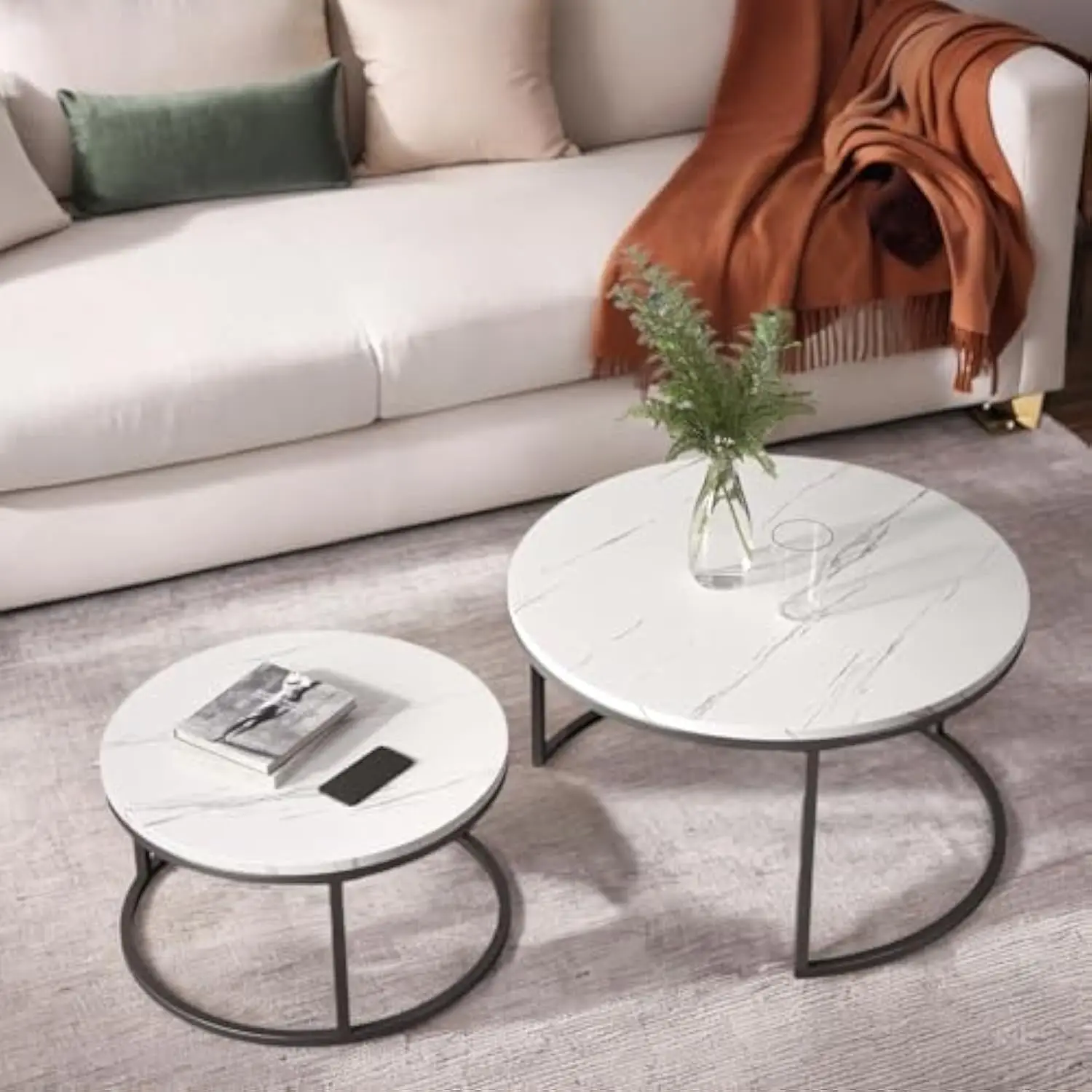
For those developing an appreciation for quality furniture, comparing these characteristics against the best black mid-century coffee tables provides practical education in recognizing excellence across different materials and designs.
What Makes Some Teak Tables More Iconic Than Others?
Not all teak tables achieve truly iconic status. The distinction between ordinary teak furniture and pieces that become design landmarks involves subtle but significant factors that elevate certain tables to enduring prominence.
Innovation plays a crucial role in establishing iconic status. Tables that introduce new solutions to functional problems, explore fresh aesthetic approaches, or advance technical capabilities often gain recognition beyond their contemporaries. This innovation need not be dramatic—sometimes subtle refinements to proportion or joinery techniques create lasting impact.
Design integrity separates iconic pieces from mere trend-followers. Tables created with clear design intent and consistent execution of principles throughout tend to maintain relevance regardless of changing fashions. This integrity manifests as a sense of inevitability—the feeling that every element belongs exactly where it is, serving both visual harmony and practical function.
Cultural resonance also contributes to iconic status. Tables that capture the spirit of their era while transcending temporary trends often achieve lasting recognition. These pieces express cultural values and aspirations in material form, becoming artifacts that tell stories about design evolution and social history.
Documentation and provenance further distinguish certain tables, particularly when connected to recognized designers or workshops. However, anonymous pieces of exceptional quality can also achieve iconic status through inherent excellence rather than famous attribution.
The true measure of iconic status ultimately comes through time—pieces that continue to inspire, function, and delight across generations demonstrate the rare combination of qualities that elevate furniture from commodity to cultural touchstone.
Is Teak Still Relevant in Contemporary Interior Design?
Despite its strong associations with mid-century design, teak continues to play a significant role in contemporary interiors. Its enduring relevance demonstrates the timeless quality that defines truly iconic materials and forms.
Today’s interior designers regularly incorporate teak elements for several compelling reasons:
- The material’s warmth brings natural balance to contemporary spaces that might otherwise feel cold or sterile
- Teak’s textural quality creates welcome contrast in minimalist environments
- The wood’s honest materiality satisfies growing interest in authentic, natural elements
- Its proven durability aligns with contemporary values of quality and longevity
Modern interpretations of teak furniture often maintain classic proportions while introducing subtle contemporary elements—slimmer profiles, innovative joinery details, or combinations with other materials like metal or glass. These approaches respect teak’s heritage while ensuring continued relevance.
The adaptability of teak across design styles contributes significantly to its ongoing popularity. Whether in sleek urban apartments or casual country homes, teak pieces integrate successfully through their balanced forms and natural warmth. For those exploring options beyond teak, walnut coffee tables provide another timeless alternative with different aesthetic qualities.
Perhaps most importantly, teak’s continued presence in contemporary design represents a broader shift toward valuing permanence over disposability. As consumers increasingly reject throwaway furniture in favor of pieces with lasting quality, teak’s inherent durability and timeless aesthetic position it perfectly for renewed appreciation.
The iconic nature of teak tables ultimately comes from this remarkable combination of qualities—exceptional material properties, thoughtful design, superior craftsmanship, and practical functionality—that together create furniture transcending trends to become truly timeless. At Hearth Forms, we celebrate these enduring qualities in our carefully curated collections, helping customers discover pieces that will enhance their spaces for generations to come.

